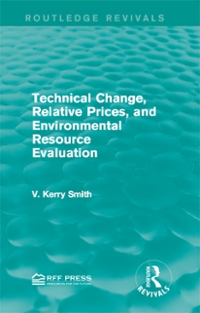Question
Assume that expectations of P and A are correct. Based on the wage-setting behaviour, the real wage will be equal to which of the following?
Assume that expectations ofPandAare correct. Based on the wage-setting behaviour, the real wage will be equal to which of the following?
Select one:
a.APF(u, z).
b.P(1 +m).
c.A(1 +m).
d.AF(u, z).
e.AP(1 +).
Suppose the economy is initially operating at the natural level of output. Now, suppose the central bank raises the inflation target by 3%. Given this information, we would expect that:
Select one:
a.the real interest rate will decrease by less than 3% in the medium run.
b.the real interest rate will increase by less than 3% in the medium run.
c.the real interest rate will decrease by exactly 3% in the medium run.
d.the real interest rate will not change in the medium run.
e.the real interest rate will increase by exactly 3% in the medium run.
The assumption that the aggregate production function exhibits decreasing returns to capital (K) implies that a 5% increase inKwill cause:
Select one:
a.a decrease inK/N.
b.a decrease inY/N.
c.Yto increase by exactly 5%.
d.no change inY/N.
e.Yto increase by less than 5%.
Assume that there is perfect arbitrage in the stock market. Given this information, economists believe that:
Select one:
a.movements in stock prices can be easily predicted.
b.movements in stock prices are largely unpredictable.
c.most stocks diverge widely from their fundamental value.
d.stocks will generally earn a lower rate of return than bonds.
e.the rate of return on stocks will be equal to the rate of return on bonds.
When the IS curve is drawn with the nominal interest rate on the vertical axis, a reduction in the expected inflation rate will cause:
Select one:
a.the IS curve to shift rightward.
b.the IS curve to become steeper.
c.the IS curve to shift leftward.
d.no change in the IS curve.
e.the IS curve to become flatter.
In the richer countries, over the past two centuries:
Select one:
a.physical capital has increased significantly, but not human capital.
b.physical capital has steadily increased, while human capital first increased and then decreased.
c.physical and human capital have both increased significantly.
d.human capital has increased significantly, but not physical capital.
e.physical and human capital have both increased significantly, but the increase in physical capital has caused almost all of the growth in output.
Suppose the nominal interest rate is zero. In this situation, the present discounted value of a finite sequence of future payments is equal to which of the following:
Select one:
a.the average value of each payment.
b.the sum of all the payments divided by the rate of inflation.
c.the square of the sum of all payments.
d.the sum of all payments.
e.the sum of zero.
An upward-sloping yield curve suggests that financial market participants expect short-term interest rates will:
Select one:
a.be unstable in the future.
b.be equal to zero in the future.
c.not change in the future.
d.rise in the future.
e.fall in the future.
Suppose workers expectations of prices and productivity are accurate. For this economy, an increase in productivity will cause which of the following?
Select one:
a.An increase in the real wage and a decrease in the natural rate of unemployment.
b.A decrease in both the real wage and the natural rate of unemployment.
c.An increase in both the real wage and the natural rate of unemployment.
d.An increase in the real wage and no change to the natural rate of unemployment.
e.A decrease in the real wage and an increase in the natural rate of unemployment
Which of the following will not cause aggregate private spending to decrease?
Select one:
a.A decrease in expected future output.
b.An increase in expected future real interest rates.
c.An increase in government spending.
d.An increase in future taxes.
e.A decrease in government spending.
At the current steady state capital-labour ratio, assume that the steady state level of per capita consumption, (C/N)*, is less than the golden rule level of steady state per capita consumption. Given this information, we can be certain that:
Select one:
a.A decrease in the saving rate will have an ambiguous effect on (C/N)*.
b.An increase in the saving rate will cause an increase in the steady state level of per capita consumption ((C/N)*).
c.A decrease in the capital-labour ratio will cause a decrease in (C/N)*.
d.The capital-labour ratio will tend to increase over time.
e.The capital-labour ratio will tend to decrease over time.
Assume that an economy experiences both positive population growth and technological progress. In this economy, which of the following is constant when balanced growth is achieved?
Select one:
a.K.
b.AN.
c.K/N.
d.Y.
e.Y/AN.
Step by Step Solution
There are 3 Steps involved in it
Step: 1

Get Instant Access to Expert-Tailored Solutions
See step-by-step solutions with expert insights and AI powered tools for academic success
Step: 2

Step: 3

Ace Your Homework with AI
Get the answers you need in no time with our AI-driven, step-by-step assistance
Get Started


